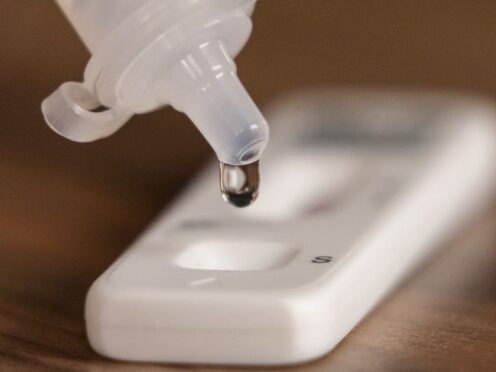A care worker has told the Scottish Covid-19 Inquiry that residents died in “droves” when untested patients were transferred from hospital to her care home during the Covid-19 pandemic.
The witness, who was giving evidence anonymously, said the death rate rose from one person every couple of months to as many as three people per week once the untested patients started to arrive.
She also said shortages of PPE and a lack of accountability to staff at her private care home, which saw staff needs go unheeded and guidance not being followed, made for a very difficult working environment that led to many members of staff, including herself, resigning.
When asked about the impact of untested patients being transferred from hospitals to the home, she said it had a “massive impact” on staff and residents, adding many of the new arrivals had Covid-like symptoms but they didn’t know whether any of them had the virus.
She said of the period around March and April 2020 when patients first started to be transferred in: “I remember a lot of residents being brought in not very well, and I remember that our death rate kept going up and up.
“We would have residents in the home who would pass away maybe every couple of months, but when these patients started coming in from the hospital they were passing away in droves.
“It was like every week one, two or three people a week, if that.”
She added staff and PPE shortages meant it was not possible for staff to abide by the guidelines around interacting with Covid-positive patients once they were in the home, with staff having to enter rooms of such patients, many of whom had recently arrived from hospital, to provide care.
She said: “You can’t just leave them just because they’re Covid-19 positive, but we weren’t fully equipped with PPE to be deal with people who are Covid-positive.”
She also told the inquiry that during the first lockdown the care home she worked in lacked sufficient stocks of PPE, resulting in staff being instructed to re-use single use masks, and having to bring in their own hand sanitiser as there was none available.
She explained that early on in the pandemic the cupboard where the PPE was stored was kept locked to prevent staff from getting to it, and staff on night shifts had no access to PPE because the administrator who controlled cupboard access did not work at night.
She said: “At first when we tried to access any PPE we were told we were using too much too quickly, so it started to get locked into the cupboard downstairs, so you would have to go to the administrator to ask for more PPE if you needed any more.”
She said this was often refused on the basis there wasn’t enough, and added that staff working on the day shift would have to hide PPE for staff on the night shift to use.
The inquiry also heard from Emma McConnachie, a self-employed podiatrist, who described the challenges facing private healthcare providers who struggled to access PPE, vaccinations and the latest guidance despite having been asked by the NHS to stay open in order to continue providing services.
She told the inquiry the NHS had priority on PPE from her usual suppliers at the start of the pandemic, causing lengthy delays in businesses such as hers obtaining masks and other protective equipment.
She said this meant businesses such as hers had to be “creative” to get what she needed for her staff to work safely, and online retailer Amazon was at times her most reliable provider of equipment.
She also described the “battle” private healthcare providers faced in obtaining vaccinations early in the pandemic, despite guidance from all four nations saying this was for all frontline healthcare workers.
She said: “It was for all frontline health care workers, private, independent, third sector, charity as well as the NHS and social care.
“In reality when you were trying to access this, those numbers and those access points were distributed through an NHS intranet, they were distributed to social care providers.
“It was like gold dust trying to find that phone number. When I did find it and called it I was told you’re not eligible. You’re not NHS.”
She said her staff were “actively refused access to a vaccine because we were not NHS”.
She added: “We didn’t have an NHS email or an ID. Even when we did eventually get access we were told to bring our NHS payslips or our NHS ID badges.”
She said this was due to a “lack of understanding” from the vaccine service delivery plan designers, as they had not understood frontline healthcare includes private podiatrists, physiotherapists and audiologists.
She added the same applied to the latest guidance for frontline healthcare workers, which, she said, was distributed through NHS intranets and social care and so was difficult for her staff to access.
The inquiry continues.
